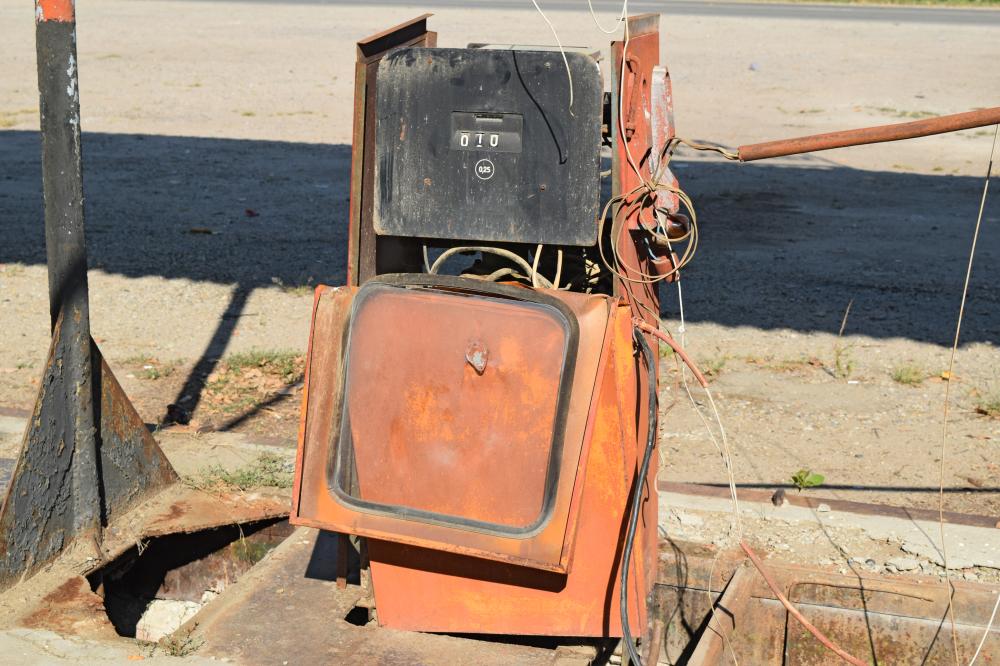
The Evolution of Inventory Challenges in Texas
In the past two decades, the landscape of inventory management has dramatically shifted, especially in a state as economically diverse as Texas. As a professional with over 20 years in the industry, I’ve seen how technological advancements and global trade dynamics have reshaped what was once a straightforward process. The challenge of managing obsolete inventory in Texas has grown in complexity, requiring nuanced strategies and solutions.
One of the key drivers of these changes is the rapid pace of technological innovation. With new products and components released at breakneck speed, the risk of inventory becoming obsolete is higher than ever. Businesses, particularly in the electronics and telecom sectors, frequently face the dilemma of dealing with products that have quickly outlived their usefulness. This is where companies like Synergy Components play a crucial role, helping firms navigate these choppy waters.
Why Managing Obsolete Inventory Matters
Obsolete inventory is more than just a storage issue; it can become a significant financial burden if not managed correctly. Having worked with numerous firms across Texas, I’ve seen firsthand how poorly managed obsolete inventory can drain resources. It ties up capital, increases storage costs, and can even impact tax liabilities.
For example, a mid-sized engineering firm I worked with in Austin discovered that its obsolete inventory was costing them over $50,000 annually in storage fees and lost tax deductions. By implementing a strategic approach to inventory management, not only were we able to recoup costs, but we also learned valuable lessons about inventory lifecycle management.
Proper management of obsolete inventory in Texas also opens doors for potential revenue streams. Many companies have found success in reselling obsolete or surplus inventory to secondary markets. This not only frees up valuable warehouse space but also contributes to a company’s bottom line.
Effective Strategies for Handling Obsolete Inventory Texas
Over the years, I have developed a few key strategies for managing obsolete inventory that have proven effective time and again:
- Regular Inventory Audits: Routinely assess your inventory to identify items that are moving slowly or not at all. This proactive approach allows businesses to address potential issues before they become unmanageable.
- Leverage Technology: Utilize advanced inventory management systems to gain real-time insights into product lifecycles and consumer demand patterns.
- Explore Secondary Markets: Engage with partners like Synergy Components to help find buyers for obsolete items, extending the life of these products in a different market.
- Implement Just-In-Time (JIT) Inventory: To reduce the risk of obsolescence, only stock inventory as needed, ensuring a leaner, more responsive supply chain.
Each strategy requires a tailored approach, depending on the specific industry and scale of the business. However, these general principles provide a foundation upon which more detailed tactics can be built.
What Qualifies as Obsolete Inventory in Texas?
Obsolete inventory in Texas typically refers to items that are no longer in demand or have been replaced by newer models. These products may no longer serve the needs of present or future market demands, rendering them difficult to sell at their original value.
But determining what qualifies as obsolete isn’t always straightforward. A product might become obsolete due to technological advancements, changes in consumer preferences, or regulatory updates. Working closely with a knowledgeable partner can help businesses identify when products are approaching obsolescence, allowing for timely interventions.
In my experience, the earlier a business can identify potential obsolescence, the better. This foresight allows for strategic decision-making, such as transitioning inventory to secondary markets or offering promotions to clear stock.
The Impact of Partnering with Experts
Throughout my career, the value of partnering with experts like Synergy Components cannot be overstated. These alliances provide access to specialized knowledge and networks that are invaluable when dealing with obsolete inventory. Synergy Components, with its expansive network and decades of experience, helps businesses across Texas address their inventory challenges efficiently.
For instance, Elise A., a senior buyer at a mid-sized engineering firm, turned to Synergy Components to recover value from thousands of obsolete semiconductors. The partnership not only prevented losses but also safeguarded against counterfeit components–a common issue when dealing with obsolete electronics.
Partnerships also offer a chance to learn from industry leaders. Firms like Synergy Components provide not just solutions but education, helping companies build robust, sustainable inventory management practices for the future.
- Access to a vast network of buyers and sellers
- Expertise in counterfeit avoidance and reliability testing
- Custom solutions for unique inventory challenges
Continued Challenges and Innovative Solutions
Even as strategies evolve, the challenges of managing obsolete inventory in Texas are constantly transforming. Economic fluctuations, supply chain disruptions, and shifting consumer trends all contribute to the complexity of inventory management. However, these challenges also spark innovation.
One emerging solution is the adoption of artificial intelligence in inventory management systems. AI can analyze vast datasets to predict obsolescence trends and recommend actionable strategies. By integrating AI technologies into existing practices, businesses can automate inventory audits and optimize decision-making processes.
Furthermore, the push for sustainability is encouraging companies to find eco-friendly solutions to inventory management. Initiatives such as recycling or re-purposing obsolete inventory contribute not just to a healthier bottom line but also to environmental responsibility.
In conclusion, the journey to tackle obsolete inventory in Texas is ongoing, but with expert guidance, innovative strategies, and a forward-thinking mindset, businesses can turn potential pitfalls into opportunities for growth and success.
What are some effective strategies for managing obsolete inventory in Texas?
Managing obsolete inventory can indeed be a challenging aspect of supply chain management, especially in a diverse economic landscape like Texas. It’s crucial to implement strategies that are both proactive and adaptive. For instance, conducting regular inventory audits is essential. These audits help in identifying slow-moving or non-moving items early, allowing you to address potential issues before they escalate. Leveraging technology, such as advanced inventory management systems, can provide real-time insights into product lifecycles and consumer demand patterns. This technological approach offers a dynamic way to keep pace with changing trends. Additionally, exploring secondary markets is a viable option. By partnering with experts like Synergy Components, businesses can find new buyers for obsolete items, turning what could be a financial drain into an opportunity for additional revenue. Have you implemented any of these strategies, or do you see potential in one over the others for your business?
Why is it important to manage obsolete inventory effectively in Texas?
Effectively managing obsolete inventory is not just about clearing out space; it’s fundamentally about financial health and operational efficiency. Obsolete inventory can tie up significant capital, increasing storage costs and potentially affecting tax liabilities. For instance, I once worked with a mid-sized engineering firm in Austin that was spending over $50,000 annually just on storage for obsolete inventory. By implementing strategic inventory management, they were able to recoup costs and optimize their inventory lifecycle. Moreover, managing obsolete inventory opens doors to potential revenue streams through reselling in secondary markets. This approach not only frees up valuable warehouse space but also positively impacts a company’s bottom line. Perhaps you might consider evaluating your current inventory for immediate opportunities to cut costs or generate revenue?
What qualifies as obsolete inventory in Texas?
Determining what qualifies as obsolete inventory can be nuanced. In Texas, obsolete inventory typically includes items no longer in demand or that have been superseded by newer models. This may occur due to rapid technological advancements, shifts in consumer preferences, or changes in regulations. For example, electronic components can quickly become obsolete as new versions arrive on the market. The key is early identification. By closely monitoring inventory and market trends, businesses can make timely decisions to either transition inventory to secondary markets or offer promotions to clear stock. Have you identified any items in your inventory that may need reevaluation based on these criteria?
How can partnering with experts help in managing obsolete inventory?
Partnering with experts like Synergy Components can be invaluable in managing obsolete inventory effectively. These partnerships offer access to specialized knowledge and networks, helping businesses navigate the complexities of obsolete inventory. For example, Synergy Components can connect you with a vast network of buyers and sellers, providing opportunities to recover value from obsolete items. They also bring expertise in counterfeit avoidance and reliability testing, crucial for maintaining the integrity of your supply chain. Moreover, these experts provide custom solutions tailored to unique inventory challenges, enhancing both operational efficiency and financial outcomes. Have you considered reaching out to such experts for guidance and potential collaboration?
What are the continued challenges and innovative solutions for managing obsolete inventory?
Managing obsolete inventory comes with its set of evolving challenges, from economic fluctuations to supply chain disruptions. However, these challenges also fuel innovation. One promising solution is the integration of artificial intelligence (AI) in inventory management. AI can analyze vast datasets to predict obsolescence trends and offer actionable strategies, making inventory audits and decision-making processes more efficient. Additionally, the growing focus on sustainability is encouraging companies to explore eco-friendly inventory management solutions, like recycling and repurposing obsolete items. These practices not only boost financial performance but also align with environmental responsibility. Do you see potential areas within your organization that could benefit from these innovative approaches?
Resources
- Texas Commission on Environmental Quality (TCEQ) – The TCEQ website provides information on environmental regulations and sustainable practices in Texas.
- Small Business Administration (SBA) – The SBA offers resources and support for small businesses, including inventory management tips.
- Austin Community College – Austin Community College provides educational resources on supply chain management and inventory control.
- Texas.gov – The official website of the state of Texas offers valuable information on business regulations and best practices.


